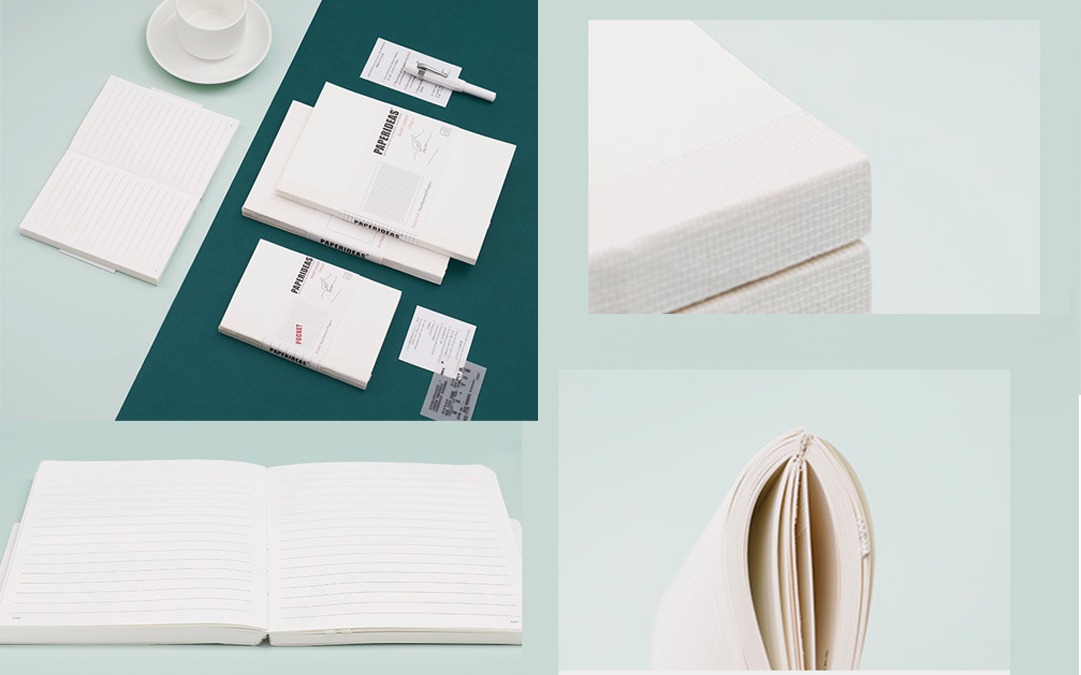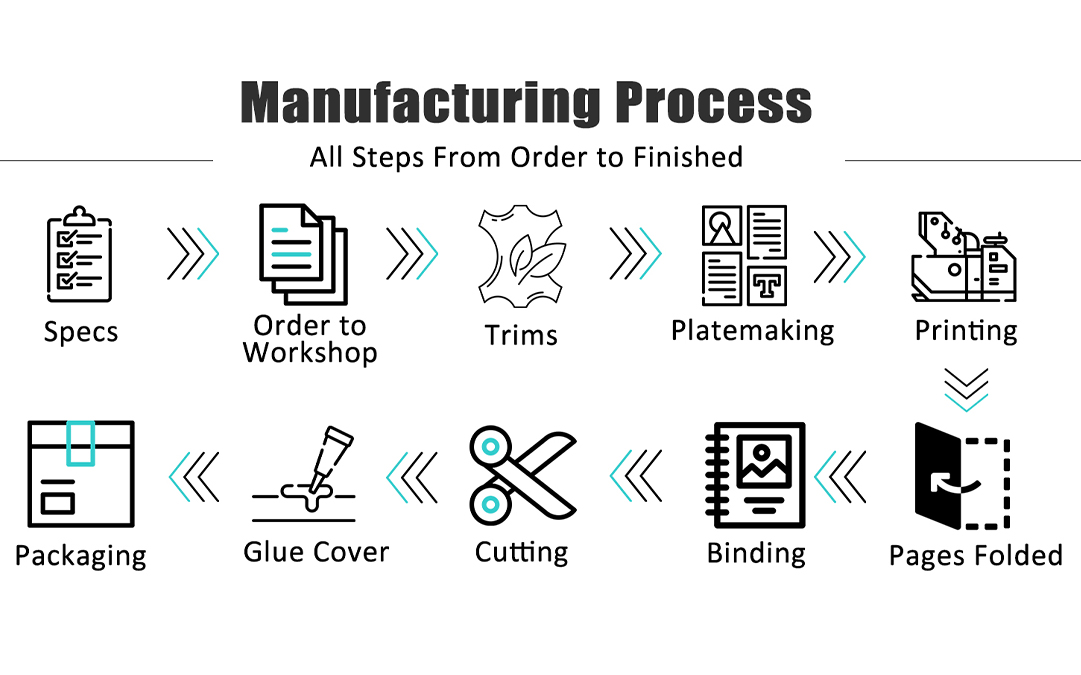How to Incorporate Customer Feedback into Notebook Design
Introduction
In the custom notebook printing industry, staying ahead of trends and meeting customer expectations are crucial based design your own notebook. As a seasoned and a specialist in custom notebook printing with 20 years of experience, I’ve learned that the best way to create high-quality custom notebooks is to incorporate customer feedback into the design process. This approach not only ensures customer satisfaction but also helps in designing notebooks that stand out in the market. Let’s dive into how you can effectively gather and implement customer feedback to design your own notebook.
1. Conduct Surveys and Questionnaires: Design Your Own Notebook with Customer Feedback
Gathering direct feedback from your customers through surveys and questionnaires is an effective way to understand their preferences and expectations. Ask specific questions about the types of covers they prefer, such as hardback or softcover, their favorite paper quality, and the binding styles they find most durable. You can also inquire about the types of designs and features they would like to see in future products. By collecting this information, you can make informed decisions that align with your customers’ desires, thereby enhancing their satisfaction and loyalty.
2. Analyze Customer Reviews: Incorporating Customer Feedback into Notebook Design
Customer reviews are a goldmine of information. They provide insights into what customers love about your products and what needs improvement. Analyze reviews on your website and third-party platforms to identify common themes and areas for enhancement. Pay attention to both positive and negative feedback, as this will give you a comprehensive understanding of your product’s strengths and weaknesses. Implementing changes based on these reviews can significantly improve the quality and appeal of your notebooks, making them more attractive to potential buyers.
3. Engage with Customers on Social Media: Enhance Notebook Design Through Customer Insights
Social media platforms are excellent for real-time feedback. Create polls, ask questions in your posts, and encourage your followers to share their thoughts and ideas. This interaction not only boosts engagement but also gives you valuable feedback. Social media also allows you to reach a broader audience, which can lead to diverse and innovative suggestions. By staying active on social media, you can foster a community around your brand, where customers feel heard and appreciated, leading to higher customer retention and brand loyalty.
4. Host Focus Groups: How to Gather and Use Feedback for Custom Notebooks
Organizing focus groups allows you to dive deeper into customer preferences. Invite a diverse group of customers to discuss their experiences with your notebooks and gather detailed feedback on various aspects like cover material, inner page design, and binding techniques. This qualitative feedback can provide nuanced insights that are often missed in quantitative surveys. Focus groups also enable you to ask follow-up questions and explore specific areas of interest in greater detail, ensuring that you capture a comprehensive understanding of your customers’ needs and preferences.
5. Implement a Feedback Loop on Your Website
Add a feedback section on your website where customers can easily share their opinions and suggestions. This can be a simple form or a more interactive feature like a feedback widget. Ensure you regularly review and act on this feedback. By creating an accessible and user-friendly feedback system, you can encourage more customers to share their thoughts. Regularly updating your website with changes based on customer feedback shows that you value their input and are committed to continuous improvement, which can enhance customer trust and loyalty.
6. Offer Customization Options
One of the best ways to incorporate customer feedback is by offering extensive customization options. Allow customers to design their own notebooks by choosing from a variety of covers, paper types, and binding styles. This not only meets their preferences but also enhances their overall experience. Providing customization options empowers customers to create a product that fits their unique needs and tastes, making them more likely to be satisfied with their purchase. Additionally, offering customization can set your brand apart from competitors and attract a wider audience.
7. Prototype and Test
Before launching a new notebook design, create prototypes and test them with a small group of customers. Gather their feedback on the design, functionality, and overall quality. Use this feedback to make necessary adjustments before mass production. Prototyping allows you to identify potential issues and make improvements early in the development process, saving time and resources. It also ensures that the final product meets customer expectations and performs well in the market.
8. Monitor Trends and Competitor Products
Stay updated on industry trends and analyze competitor products. Pay attention to what’s popular in the market and gather feedback from customers who have used competitor notebooks. This can provide insights into what works and what doesn’t, helping you design better notebooks. By keeping an eye on trends and competitor activities, you can identify opportunities for innovation and differentiate your products. This proactive approach can help you stay ahead of the competition and continuously improve your product offerings.
9. Implement Continuous Improvement
Incorporating customer feedback should be an ongoing process. Regularly update your notebook designs based on new feedback and changing customer preferences. This ensures your products remain relevant and continue to meet high standards of quality and customer satisfaction. By embracing a culture of continuous improvement, you can adapt to evolving market demands and enhance the overall customer experience. This approach not only improves your products but also strengthens your brand reputation and fosters long-term customer loyalty.
10. Communicate Changes to Customers
When you make improvements based on customer feedback, communicate these changes to your customers. This shows that you value their input and are committed to providing the best possible products. Use newsletters, social media, and your website to keep customers informed. Transparency in your improvement processes can build trust and encourage more customers to provide feedback in the future. It also demonstrates your dedication to customer satisfaction and continuous enhancement of your products.
Conclusion
Incorporating customer feedback into notebook design is essential for creating products that meet customer needs and stand out in the market. By actively seeking and implementing feedback, you can design your own notebook that not only satisfies your customers but also enhances your brand’s reputation for quality and innovation.
Remember, the key to success in the custom notebook printing industry is to stay connected with your customers and continually evolve your products based on their feedback. This approach will help you maintain a competitive edge and ensure long-term success in the market.
Contact Us: Ms. Rimo Lau WhatsApp Me:
Whatsapp: 0086 18336352791 – WeChat&Phone
Website: www.fullcolorprintstationery.com
E-Mail: [email protected]





